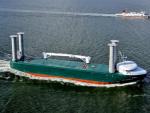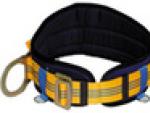What is compression clothing? Compression pants. Which compression garment to choose
What are compression pants for? For any athlete who is seriously involved in martial arts, and accordingly for a boxer, it is important to maintain muscle tone, stimulate normal blood circulation and keep them warm, especially during the training process. Compression pants, rash guards and other types of special clothing are designed for this, helping the athlete avoid problems with sprains, bruises, and muscle injuries. They also create excellent compression and allow the muscles to be toned during training.
The peculiarities of using compression pants are that they are not only effective and useful equipment for a boxer athlete, but also protect against damage, abrasions, minor injuries and sprains. Compression pants have recently become very popular among amateur and professional boxers who use them during training.
What are compression pants made of?
To ensure consistent muscle comfort during training, boxers often use compression pants that are made from spandex and polyurethane, stretch stitching, and sublimated printing with a multi-panel construction completed by an elastic waistband with drawstring. Such pants protect the skin from abrasions, and give the muscles the tone and proper blood supply necessary for the training process.
The legs are equipped with elastic bands inside the cuffs, which allows them to better adhere to the skin. Artificial fabrics - polyester and elastane should be washed in cold water, followed by a gentle spin.
What are compression pants for? Main advantages
- The material of the pants allows air to pass through well, does not retain moisture and prevents the athlete from hypothermia, which is especially important during outdoor training.
- The compressive effect of compression pants allows you to keep your muscles toned even during prolonged exercise.
- The antibacterial component of the compression pants material promotes the health of the boxer's skin and prevents the development of pathogenic microflora in sweat secretions. This is very important when in contact with other athletes, especially in the ring, where skin diseases can pass from sick to healthy boxers. To avoid this, you need to wear compression pants and other clothing.
Compression pants are available in men's and women's versions. Since boxing is gaining more and more fans among the “weaker” sex, the relevance of wearing compression pants for athletes is growing. We can say that it was compression clothing that provoked a real “boom” among women who want to engage in martial arts and martial arts.
Compression shorts
In addition to compression pants, compression shorts are often used. Since boxing is a very active sport and the movements in the ring are varied and involve the work of almost all types of muscles of the athletes, compression shorts help to avoid sprains, abrasions and other unpleasant things that often accompany training.
In addition, compression shorts, like pants, do not allow blood vessels to appear in the negative form of stars or manifestations of enlarged veins, since the blood flow in the muscles supported by the pants and shorts is always stable.
To choose the right compression shorts, you need to understand which model and which size is best for a particular person. From brands today you can choose a wide variety of compression clothing options, but there are also specifics - the prices and quality of a particular product.
For example, Venum compression shorts will promote normal blood circulation and, accordingly, increased muscle energy for the purchaser of such clothing. The Reebok Combat Compression Shorts are a form-fitting short that provides constant support to working or non-working muscles, keeping you warm and allowing your blood vessels to work properly.
Reebok shorts will help its owner in solving issues of muscle tone, sweating and other functionality, thanks to which the body will better cope with stress without internal and external discomfort.
The effectiveness of compression pants
What specific problems can compression pants help solve? They are all heard:
- prevention of thrombosis;
- prevention of vascular diseases associated with excessive stress;
- anti-traumatic.
What are the benefits of wearing compression pants?
- Heat transfer and heat retention.
- Muscle support.
- Comfortable state of muscle mass and blood vessels during training.
- Stimulation of the outflow of venous blood.
- Improved blood circulation.
- Accelerating the cell recovery process.
- Reduced leg swelling.
- Increasing the athlete's endurance and performance.
- Improving the athlete’s coordination of movements and reducing muscle reaction time.
Compression clothing should be worn during prolonged muscle activity, and also if the athlete has a predisposition to venous diseases. It is recommended to wear them for speedy recovery after competition.
You should not wear compression pants all the time, as you can achieve an overdose, and this is a new problem, which is characterized by the fact that the blood vessels cease to be in good shape with constant pressure. It should be remembered that compression pants and shorts should be difficult to put on, but not restrict movement.
Contraindications
The presence or suspicion of the following diseases should stop an athlete if he is going to wear compression pants: atherosclerosis, orthoarteritis, endoarteritis, thromboangiitis obliterans.
Thus, it can be stated that compression pants are very useful for large muscle loads of a boxer and it is necessary to purchase them, then both the training process and fights in the ring will be more effective and productive.
You can choose and buy compression pants and shorts from the world's leading manufacturers on our website in the Compression Pants section.
If you regularly play sports, you have almost certainly heard - from a trainer, “colleagues” or friends - about compression clothing, the popularity of which is growing literally every day.
If you haven’t had time to figure out what it is, if you haven’t heard about it, this article is for you. Proswim specialists tried to answer all the most important questions related to this interesting new product.
Compression clothing? What is this?
Compression clothing, as the name implies, fits the body very tightly and provides pressure on the muscles, preventing them from cooling down, and provides better blood circulation. Moreover, thanks to a specially developed compression gradient, strong pressure is applied precisely to the desired muscle groups, and not to the stomach or diaphragm. Blood circulation improves, which means more oxygen reaches the muscles. In addition, due to the pumping of blood through the vessels, the likelihood of varicose veins is reduced.
Training becomes much more effective - almost no lactic acid is formed in the muscles, the so-called “clogging” of muscles is reduced (lactic acid and carbon dioxide are “squeezed out” into the veins), a person is able to do longer exercises, and recovers faster after them. In addition, no extra energy is wasted when vibrating the muscles - this is again due to the compression and muscle support it provides.
Some people prefer to use compression clothing and wear it at night after training. And many athletes note that it is almost as effective as massage, ice baths, acupuncture and other restorative procedures.
SKINS
 On most sports forums, as soon as there is a conversation about compression clothing, the name of the company SKINS almost immediately begins to appear. This company is known not only here, but throughout the world. There is a rather interesting story about its origins. According to it, one skier, a native of warm Australia, was puzzled: how can you train all day, have fun all night and still hardly get tired? After 5 years, SKINS compression clothing appeared on the market. It is sewn from a special material, very elastic, which retains its shape for a long time. Long in this case is not several months, but several years with regular use.
On most sports forums, as soon as there is a conversation about compression clothing, the name of the company SKINS almost immediately begins to appear. This company is known not only here, but throughout the world. There is a rather interesting story about its origins. According to it, one skier, a native of warm Australia, was puzzled: how can you train all day, have fun all night and still hardly get tired? After 5 years, SKINS compression clothing appeared on the market. It is sewn from a special material, very elastic, which retains its shape for a long time. Long in this case is not several months, but several years with regular use.
The SKINS company produces several lines of compression clothing, which differ in their purpose. So, there are the following lines:
* A200 - for all sports (entry level)
* A200 Thermal - for an active lifestyle in the cold season
* A400 - for a variety of high-impact sports, suitable for marathons and long races
* C400 - for cycling
* G400 - for golf
* S400 - for skiing/running/snowboarding
* RY400 - for recovery
* TRI400 - for triathlon
 It is worth noting that the difference between the models of the A200 and A400 series lies in the unique sewing technique for each line and the use of several types of fabrics (for example, when creating the A400 line, 5 different materials are used, and A200 - 3).
It is worth noting that the difference between the models of the A200 and A400 series lies in the unique sewing technique for each line and the use of several types of fabrics (for example, when creating the A400 line, 5 different materials are used, and A200 - 3).
The 200 series are universal - they are designed for almost any sport.
The compression of the 400 series varies depending on the sport for which certain models are intended. This is due to the fact that in different sports the load falls on different muscle groups, and those groups that are loaded to a lesser extent should not be too squeezed or pinched. The RY400 series is designed for post-workout recovery.
It is always important to choose clothes by size - everyone knows this, even a small child. In the case of compression clothing, this is especially important. And SKINS specialists approached this very responsibly. Different clothing lines have their own size charts. Thus, models of the SKINfit line are selected based on height and weight. When compiling the sizing chart for the 400 fit line, the developers took into account how different builds can be among people even of the same height.
Additional studies were conducted, consisting of scanning the figures of different athletes and analyzing the results. These studies helped identify 400 key measurements of the human body, on which SKINS sizes are based.
It is very important not only to choose compression clothing strictly according to size, but also to put on the model correctly. So, pay attention to the fact that the seams should “lie” on the “borders” of the muscles. Those. Each piece of cut must strictly correspond to its muscle group.
 The manufacturer claims that SKINS clothing regulates body temperature and removes moisture. Because of this, confusion sometimes arises, and SKINS products are confused with thermal underwear. This is fundamentally wrong. Yes, compression clothing really does not allow you to freeze at temperatures around +10 and slightly lower. However, this is not its main function. This is rather an additional effect, which is associated with improved blood circulation and a tight fit to the body. Thanks to the body temperature regulation function, clothes of this brand make it convenient to exercise even on hot days. In addition, all SKINS lines have 50+ UV protection.
The manufacturer claims that SKINS clothing regulates body temperature and removes moisture. Because of this, confusion sometimes arises, and SKINS products are confused with thermal underwear. This is fundamentally wrong. Yes, compression clothing really does not allow you to freeze at temperatures around +10 and slightly lower. However, this is not its main function. This is rather an additional effect, which is associated with improved blood circulation and a tight fit to the body. Thanks to the body temperature regulation function, clothes of this brand make it convenient to exercise even on hot days. In addition, all SKINS lines have 50+ UV protection.
The SKINS manufacturers did not ignore another problem. Naturally, when playing sports, active sweating occurs. Moisture is quickly absorbed, enters the upper layers of the material and evaporates. The fabric also contains antimicrobial elements that help maintain freshness longer and prevent odor.
1) If you regularly engage in sports (primarily triathlon, cycling and running) and would like to improve your performance - that is, move faster, better and at the same time less tired;
2) If you need quick recovery after any physical activity;
3)If you are planning to purchase high-quality and comfortable compression clothing that can be used for a long time.
Prosvim presents the main and most important products from the wide range of SKINS.
A400 - the best series of compression tights (pants) + T-shirt with sleeves
RY 400 - restoration series
We recommend the RY400 compression series - recovery not only for triathletes after running or cycling, but also for swimmers. Faster recovery will help you handle higher training loads, perform better in your next session, and feel better! You can read reviews of famous triathletes about SKINS in our other page.
If you are actively involved in sports, then your blood vessels need additional support. Otherwise, the risks of various diseases may increase. Therefore, to help your blood vessels, you need to use sports compression garments. For many years, this type of clothing has been used to improve the performance characteristics of the athlete and increase his level of comfort. Today we will tell you why an athlete needs compression clothing.
Compression clothing comes in socks, pants, leg warmers, T-shirts and other options. First you need to understand how compression garments work. The principle of operation is to compress the veins to varying degrees and narrow the blood vessels. As a result, blood flow accelerates, the functioning of the circulatory system is facilitated, muscles are enriched with oxygen and nutrients, and decay products are removed from the body.
The main function of sports compression clothing is to compress the limbs and help blood vessels function correctly and withstand heavy loads.
In medicine, there are 4 classes of compression. However, you can only buy and select compression sportswear on your own with compression class 1; otherwise, you need to consult a specialist. Compression class 1 is preventative. It should be used if you find yourself with enlarged saphenous veins or spider veins.
The effect of compression sportswear.
Professional and amateur athletes often use compression sportswear during training and preparation for competitions. What is it for?
- Prevention of thrombosis and additional stress on the cardiovascular system, since a person is under excessive load, the vessels lose their shape, and the functioning of the valves is disrupted;
- Injury is reduced, as vibrations are reduced and additional support is provided to the muscles;
- The sensation of the body in space increases;
- Training becomes comfortable, since sports compression clothing has good thermoregulation and elasticity;
- The outflow of venous blood is stimulated;
- Blood circulation improves;
- The process of tissue restoration is accelerated;
- Efficiency and endurance increase;
- Swelling of the legs decreases;
- Prevents the appearance of calluses;
- Coordination improves and muscle reaction time is reduced due to increased proprioceptive sensitivity.

In addition, scientists in Auckland from Macy University showed that only 14% of athletes who ran 10 km in compression socks experienced delayed muscle pain. By comparison, 93% of athletes who ran 10K without compression socks experienced shin pain the next day.
When to wear compression sportswear?
- During prolonged exercise;
- If you are predisposed to varicose veins;
- For recovery after competitions or heavy training.
However, it is not recommended to wear compression sportswear all the time. Because there may be an overdose effect. Remember that with constant pressure, blood vessels may no longer maintain their natural tone. And this will cause the same problems as with insufficient compression.

We also draw your attention to the fact that sportswear with a compression effect should fit tightly and be difficult to put on, but at the same time without restricting movement.
Contraindications for sports compression clothing:
- Atherosclerosis;
- Orthoarteritis;
- Endoarteritis;
- Thromboangiitis obliterans.
If you still don’t know why compression clothing is needed for sports, then pay attention to its main advantages: additional muscle support, accelerated recovery and reduced injuries. All these factors are very important for both a professional athlete and an amateur.
Intense and long-term training exposes the athlete’s body to high stress: muscles, blood vessels, veins and arteries are overstrained, which can lead to serious consequences and injuries. This is why athletes, both beginners and professionals, often use compression clothing, which is designed to not only protect you from injury, but also improve your performance during training.
How do compression sportswear work?
The whole secret of how a compression garment works is in the material it is made of: it is an elastic fabric (containing spandex and polyurethane) with the addition of specialized components that provide uniform compression and pressure only on those muscles that require it. Thus, the key function of such clothing is to compress and support the muscles (which is what the word “compression” actually means). Such clothing most often has reinforced seams and ventilation inserts that allow the skin to breathe. One of its varieties is compression T-shirts. Fitted tightly and precisely to the torso, like a second skin, it stabilizes the muscles and provides you several important effects:
- prevents veins from enlarging;
- protects the walls of blood vessels from deformation and varicose veins;
- improves blood circulation and oxygen flow for the cardiovascular system;
- reduces muscle pain and the risk of spasms;
- Supports ligaments and tendons to protect against injury.
All these properties should not come as a surprise, since compression sportswear originates from medicine. 60 years ago (and still) compression garments (stockings, socks, etc.) were used for medicinal purposes, and only 20 years later scientists began to consider them as equipment for sports.
What are the benefits of compression clothing for your workouts?
To begin with, we note that, unlike ordinary cotton or any other knitted clothing, a T-shirt with compression properties will help the athlete maintain the body and muscles in a warm state during training - your body will quickly engage in active work. It also provides greater comfort because the compression wicks sweat away from the body, protects the skin from UV rays and retains heat, which is important for training in cold and hot weather.
Compression definitely has positive action:
- on the coordination of your movements: you will feel better about your own body and will be able to improve your technique;
- for endurance and efficiency: it will increase due to increased support and stabilization of muscles;
- on strength: another important advantage is the energy return function, when with each stretch and contraction of the muscles, due to the return of energy, the movements become stronger.
Thus, when training in a compression T-shirt, you will be able to give 100%, demonstrate excellent performance, speed and maintain strength for a longer time.
Multifunctionality allows you to use compression clothing not only during, but also after training. It helps to recover much faster from injuries or swelling, get rid of muscle pain, and feelings of fatigue, since compression improves blood flow to the vessels, which means it reduces the build-up of lactic acid and other metabolic waste. The compression garment is also suitable for everyday wear, for example, during long flights and trips.
How to choose a compression T-shirt
Compression T-shirts are suitable for most sports: running, boxing, martial arts, gymnastics, fitness, aerobics and so on. They differ in manufacturing technology, design, and sleeve length. For training in warm rooms or in hot weather, a short-sleeve T-shirt such as the Reebok ActiveChill is great. Flat seams and a snug fit provide incredible comfort, while ventilation panels in the back improve breathability. A compression T-shirt is not only effective, but also very stylish. The Venum Contender long-sleeve T-shirt is proof of this: it will highlight your core muscles, keep your arms and body warm during cold weather workouts, and the silicone strip at the waist will prevent it from riding up during sudden movements.
Compression clothing: how and when to wear
If you often carry out long, intense workouts or want to speed up the recovery process after injuries or heavy loads, sports training clothing is recommended for you. However, it should be remembered that moderation is important in everything: wearing sportswear for a long time is fraught with consequences, since it is impossible to keep the blood vessels in a constantly compressed state. It is necessary to take into account medical contraindications. These include:
- arteritis;
- thromboangiitis;
- skin dermatitis;
- chronic leg diseases;
- atherosclerosis;
- problems with blood circulation;
- hypersensitivity of the skin.
To increase the durability of your clothes, wash them on a delicate cycle no higher than 30 degrees, or hand wash them. To avoid damaging the fibers, do not use products containing bleach or chlorine. Compression clothing does not need to be dried on a radiator, ironed or wrung out in an automatic machine. We recommend that you rinse your compression shirt after training for 10 minutes using mild powders or shampoos - this will help keep your T-shirt durable and looking fresh for a long time.
In today's informational article, LYNX, in which you can, perform, and, will tell you why compression clothing is needed, what properties and advantages it has.
Why do you need compression clothing for sports?
Compression clothing, due to its special characteristics and properties, allows athletes to solve a number of important problems:
- Improving blood circulation during sports or rehabilitation procedures. Increasing blood flow in the body of athletes is the main task that is assigned to compression clothing. Thanks to its characteristics, clothing allows you to create and distribute pressure on the muscular system, and therefore, by performing physical activity, the athlete increases the speed of blood movement in the body. As a result, the muscles are better saturated with fresh oxygen, increasing their own endurance and performance. In addition, the use of compression clothing during training and competitions makes it possible to reduce the likelihood of muscle spasms and eliminate the feeling of heaviness.
- Prevention of varicose veins. The use of compression clothing as a preventive measure for varicose veins is considered by modern medicine to be one of the most effective and efficient ways to overcome this disease. In addition, systematically wearing clothing that has a compression effect is a good way to prevent the onset of the disease, especially for those people who are at risk.
- Faster recovery process after training. Clothing with compression properties also improves the speed of blood flow in the body, which is at relative rest. And as a consequence of this, the athlete’s muscular system recovers more quickly after intense or very high physical activity.
- Reducing the risk of injury. Clothing that tightly fits the athlete's body, for example, rash guards, which inherently represent a second skin, is essentially a lightweight but very durable bandage. Such a bandage acts as an effective means of supporting the athlete’s muscular system and joints, reducing the risk of injury.
- Prevention of calluses. Being a second skin, clothing with a compression effect fits onto the legs as reliably and tightly as possible, without slipping off during sports or forming folds. As a result, the risk of blisters is significantly lower than when using conventional sports equipment.
How to choose compression clothing for sports?

In order to choose the right compression clothing, an athlete should adhere to the following tips:
- Determine why exactly you need compression clothing. At the moment, manufacturers produce and offer consumers two options for clothing that have a compression effect. The first type includes clothing for physical activity, and the second type includes clothing for faster recovery after injury. The main difference between these types of clothing is the different level of conversion. So, for example, in order to buy compression socks for loads, you need to measure your calf, and for recovery, you need to measure your ankle.
- Measure yourself correctly. When deciding to buy compression clothing, you should remember that they are not the same size as what you wear in everyday life. This is due to the fact that sports equipment, which has a compression effect, is denser and more difficult to pull on than regular clothing. In addition, it should tightly fit the athlete’s body, sitting on him like a real second skin. It is for this reason that each major manufacturer of compression clothing has its own size chart. And therefore, before buying a rash guard, compression pants, shorts or leggings, you should first measure yourself with a centimeter and, based on the data obtained, choose the most suitable size for yourself. It is worth saying that it is best to take measurements every time before choosing compression clothing, since the muscular system has the ability to pump up or lose weight, and therefore change in size.
- Don't be afraid of tight clothes. When choosing clothing with a compression effect, remember that it should be tight when put on. For this reason, you should be prepared for the fact that you will have to pull it on yourself with great difficulty. If you choose socks, shorts or a rash guard based on your usual clothing size, then most likely this equipment will make you feel uncomfortable while playing sports.
- Before purchasing, decide for what loads you need clothing. This is especially true for those who decide to purchase compression socks or leggings. This is due to the fact that gaiters can be used for swimming, after which the athlete will not suffer from the fact that this equipment got wet in the water; such clothing is most interesting to triathletes. If we talk about gaiters, they are considered more multifunctional and can be used in all sports. In addition, a large assortment of golf socks manufactured by manufacturers will allow the athlete to choose a model designed specifically for his sport. Thanks to this, they will take into account not only the dynamics of the exercises, the presence of certain types of load, but also the most frequently used shoes, as well as various external factors.
- Pay close attention to the quality of the fabric. It is worth remembering that the quality of the fabric, as well as flat, non-chafing seams are one of the most important guarantees of high-quality compression clothing. Therefore, when choosing clothing with a compression effect, carefully consider these factors.
How to wear compression clothing correctly?

- Remember that compression garments should be difficult to put on. Don't expect that putting on your purchased compression garments for the first time will be easy. As a rule, a person who decides to try training in such equipment for the first time will need some time to get used to quickly putting on compression clothing on his own.
- Get help. If you have purchased compression socks or shorts, but cannot put them on yourself, an excellent solution in this situation would be to purchase a specialized device, which can often be found in online stores, as well as departments selling therapeutic compression hosiery.
- Please read the instructions carefully. As a rule, each manufacturer includes detailed instructions with its compression clothing on how to put on and use the product. Try not to neglect this information that is useful to you, as in these instructions you can get the fastest and easiest way to put on the product you purchased.







 Boris Skripko: Bivol and Kovalev should easily win title fights Boxing commentator Boris Skripko biography
Boris Skripko: Bivol and Kovalev should easily win title fights Boxing commentator Boris Skripko biography Endocrinologists about losing weight with hypothyroidism Hypothyroidism and excess weight treatment
Endocrinologists about losing weight with hypothyroidism Hypothyroidism and excess weight treatment What to do if the fish get sick?
What to do if the fish get sick? Shooting at aerial targets Shooting with conscious aiming
Shooting at aerial targets Shooting with conscious aiming